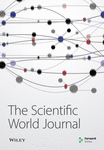Evaluation of DNA Damage in Common Carp (Cyprinus carpio L.) by Comet Assay for Determination of Possible Pollution in Lake Mogan (Ankara)
Abstract
Contamination of the aquatic environment with various concentrations of pollutants results in unexpected threats to humans and wildlife. The consequences of exposure and metabolism of pollutants/xenobiotics, especially carcinogens and mutagens, can be suitably assessed by investigating severe events, such as DNA damage; for example, DNA adducts and DNA strand breaks. One of the commonly used techniques to detect DNA damage in aquatic organisms is single-cell gel electrophoresis (comet assay). This study was carried out using Cyprinus carpio in order to identify the possible pollution in Lake Mogan, near Ankara, Turkey, where the city′s sewer system and pesticides used in agriculture are believed to be the common causes of pollution. From the comet assay, the tail length (μm), tail intensity (%), and tail moment values of fish caught from Lake Mogan were found to be 31.10 ± 10.39, 7.77 ± 4.51, 1.50 ± 1.48, respectively, whereas for clean reference sites they were found to be 22.80 ± 1.08, 3.47 ± 1.59, 0.40 ± 0.51, respectively. The values are statistically different from each other (p < 0.0001, p < 0.0001, and p < 0.0013, respectively). These results indicate that Lake Mogan may be polluted with substances that have genotoxic effects and constitute an early warning for the lake system. Further detailed research is needed to establish the source of the pollution and the chemicals responsible.




